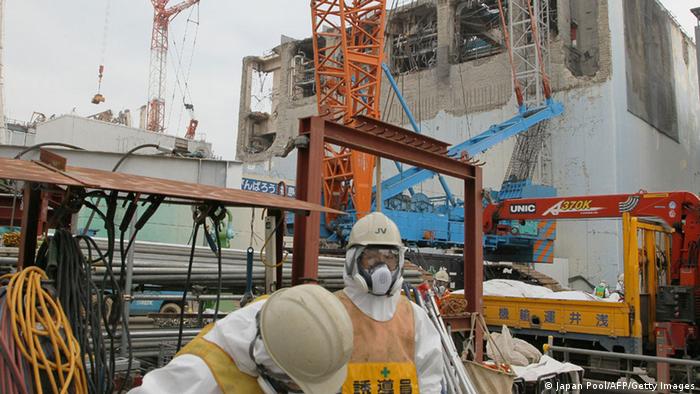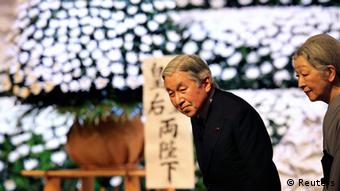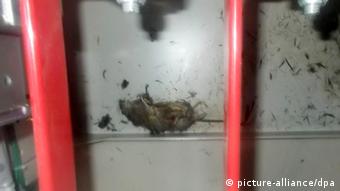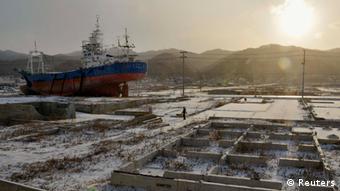http://ajw.asahi.com/article/0311disaster/fukushima/AJ201306200076
TEPCO withheld data on contaminated well water for weeks
After finding tritium levels higher than the safety standard in well water at the crippled Fukushima No. 1 nuclear power plant, Tokyo Electric Power Co. withheld the information from the public for nearly three weeks.
The company on June 19 disclosed that 500,000 becquerels of tritium per liter of water, eight times the legal limit, were detected. It also said that 1,000 becquerels of strontium, 30 times the legal limit, were detected.
TEPCO began taking water samples from the well on the sea side of the turbine buildings for the No. 1 and No. 2 reactors on May 24.
Analysis results about tritium were conveyed to plant officials on May 31 and shared within the company on June 14.
A TEPCO official said the announcement was not made until June 19 because additional analyses were carried out as there had been problems in past measurements.
The official also said the company waited until June 18 to see analysis results about strontium, which were due that day.
But on June 14 the utility already began considering measures to prevent water from flowing into the sea under the ground.
The well, 27 meters from the sea, is close to a water intake system of the No. 2 reactor, an area from which highly radioactive water leaked into the sea in April 2011.
TEPCO suspects that the contaminated water spread underground at the time and later flowed into the well, one of the three it dug in November and December.
The company plans to dig four wells nearby to investigate the situation and also inject an agent into the ground along the coast to prevent contaminated water leaking into the sea.
The discovery of high levels of strontium and tritium is expected to delay TEPCO’s plan to pump groundwater at the plant and release it into the sea to slow an increase in radioactive water.
Kazunori Endo, of the Soma-Futaba fisheries cooperative in Fukushima Prefecture, said he was exasperated with the series of problems of contaminated water at the plant.
Members of his cooperative are opposed to the plan to dump groundwater into the sea, although TEPCO said the water contains lower levels of radioactivity than nearby rivers.
The opposition grew after June 3 when TEPCO said that radioactivity levels in the water were higher than initially reported due to a mistake in measurements.
“The problem is that (scandals) crop up one after another,” Endo said. He added that TEPCO must solve the latest problem before trying to release groundwater into the sea.
Members of his cooperative have been preparing to resume full-scale operations along the prefectural coast following the March 2011 nuclear disaster.
Akio Komori, a TEPCO managing executive officer, visited the Fukushima prefectural government office on June 19 to apologize for the high levels of strontium and tritium.
Tetsuya Hasegawa, head of the living environment department, asked Komori to identify the cause of high radioactivity levels, investigate the environmental impact and prevent the spread of contaminated water.
“It was regrettable that (radioactive water was found) at a time when we are calling for all possible measures,” he said.
Fukushima Governor Yuhei Sato told senior prefectural officials on June 19 to enhance monitoring of any effects of radioactivity in the ocean.
“We have repeatedly told TEPCO to take thorough precautions against contaminated water,” Sato said. “(The latest discovery) was regrettable.”
福島核電站再次發現污水泄漏
2013年06月06日
東京——福島核電站的運營者於本周三表示,公司發現,在這個受損嚴重的核電站里,用來存儲站內放射性污水的數百個鋼質水槽當中已有一個發生了泄漏。泄漏事故再度引發了人們對該公司清污能力的質疑。
此次泄漏被發現的前一日,前述運營者東京電力公司
(Tokyo Electric Power Company,簡稱東電)的一名操作人員承認,公司已在流入福島第一核電站(Fukushima
Daiichi)的地下水中發現了銫微粒,這一說法推翻了東電早些時候斷言地下水未被污染的聲明。
東電強調,水槽泄漏事故的規模相當小,到目前為止,只有大
約1夸脫(約0.95升)的污水流出。公司還說,地下水的放射水平依然處於安全範圍之內。然而,這些問題是一連串的錯誤和災難中最新的一批,它們加劇了人
們對政府逐漸增加的指責,因為政府決定把棘手的清污任務交到東電手中。許多人說,該公司是導致核電站兩年前發生三重熔融事故的根本原因。
最近,東電一直在竭力處理核電站內數千萬加侖的有毒污水,
這些污水必須被存儲在大型鋼槽內,現在,鋼槽實際上已佔據了核電站里每一寸可用的空間。隨着地下水以每日10萬加侖的速度流入受損核反應堆廠房的地下室,
放射性污水的水量還在持續增加。這些污水每天都得進行轉移,以防止它們淹沒冷卻熔毀反應堆的臨時系統。
東電安裝了一個新的過濾系統,說它能去除除了氚之外的所有放射性微粒。然而,這樣的過濾效果還是讓東電別無選擇,只能繼續存儲污水,不能把它們倒掉。
周三的泄漏突顯了在電站存儲污水的風險,在這裡,規模更大的泄漏可能會直抵不遠處的太平洋。發生泄漏的水槽是剛剛安裝來儲存有毒廢水的。這些廢水原本被存放在一個地下儲水池裡,那個水池也發生了泄漏,不得不清空,廢水才被轉移到了這個水槽里。
面對民眾對水危機越來越高的警惕,政府上周命令東電凍結反應堆建築附近的泥土,以阻止地下水流入。這是一個新奇的計劃,需要公司築起一堵地下冰牆。東京電力公司還計劃在部分地下水抵達反應堆建築並受到污染之前將其泵到海里,以此減少地下水的流入。
然而,泵水計劃需要得到緊鄰電站周邊疏散區的居民和商業漁民的同意。自堆芯熔化使輻射泄漏至整個日本東北部之後,這些人一直在慢慢地恢復生計。東京電力公司一直在向他們保證,要排出的水裡不含會進一步污染海洋的放射性粒子。
公司員工周二承認地下水裡確實含有堆芯熔化的副產品銫,這可能會讓前述計劃陷入困境。東京電力公司承認之前的檢測存在失誤,並稱在每升水中發現了0.39貝克的放射性銫-137,這一數字遠低於日本每升10貝克的飲用水安全標準。
儘管如此,這仍有可能破壞東京電力公司把地下水泵到海里的
計劃,至少也可能會讓這個計劃暫停。就在上周,該公司還告訴當地的漁業合作社,地下水的銫含量非常低,根本檢測不出來,試圖以此說服它們。早在東電員工周
二承認事實之前,漁民就對這些保證提出了強烈質疑,表示自己不再相信東電的任何斷言。
Japan nuclear plant probes leak from new tank
TOKYO (AP) — Workers at a crippled
Japanese nuclear plant are investigating why highly radioactive water
leaked from a new storage tank, amid concerns that the problem could
further hamper cleanup efforts.
The Fukushima Dai-ichi plant
suffered multiple meltdowns after a massive earthquake and tsunami in
March 2011 knocked out power. It is currently using a fragile makeshift
cooling system that creates large amounts of highly radioactive water.
Plant operator Tokyo Electric
Power Co. said Thursday that the leak stopped after some of the water in
the faulty tank was moved to two adjacent containers, but that its
cause is still unknown.
The leak occurred in one of nearly
40 steel tanks TEPCO hastily assembled last month to hold radioactive
water from several underground storage pools that were defective and
also leaked. They are a portion of about 300 similar tanks of different
sizes spread across the plant to contain the growing amounts of
contaminated water.
A worker on Wednesday spotted
water dripping from a seam on the 500-ton tank. The total leakage was
about 1 liter (a quarter gallon), according to TEPCO spokesman Masayuki
Ono.
Three other tanks of the same design had similar leaks last year.
TEPCO says the tanks are not
intended for long-term use. Ono said additional tanks are being built
with welded seams that are more watertight.
TEPCO has been hit by a series of
problems in recent weeks, including a rat-induced blackout, adding to
concerns about its ability to safely conclude the decades-long process
of decommissioning the reactors.
The massive amount of radioactive water is among the most pressing issues affecting the plant’s cleanup process.
The Nuclear Regulation Authority,
Japan’s nuclear watchdog, urged TEPCO on Wednesday to do more to halt
leaks and to try to stop underground water runoff by 2020.
‘‘The handling of the contaminated
water is an extremely pressing issue. But the ongoing measures are
still inadequate and uncertain,’’ authority Chairman Shuichi Tanaka
said. ‘‘We must make sure that the contaminated water storage plans will
not fall apart.’’
A team of experts dispatched by
the International Atomic Energy Agency earlier urged TEPCO to step up
efforts to solve the contaminated water problem, including measures to
detect early signs of leakage.
Runoff from the three reactors
that melted in the aftermath of the March 2011 disasters and a steady
flow of groundwater into the basements of the damaged buildings produce
about 400 tons of contaminated water daily. TEPCO says about 300,000
tons of contaminated water has been stored in about 1,000 tanks at the
plant, and that the amount will double within a few years.
TEPCO plans to build additional tanks to increase the water storage capacity to as much as 800,000 tons by 2016.
It has developed a new water
processing system that can remove all but one radioactive material,
tritium, from the contaminated water. Officials say the machine will
reduce the risk of radiation exposure for workers and reduce the
environmental impact.
The government recently set up a special panel
to deal with the contaminated water problem. It instructed TEPCO last
week to minimize or prevent the groundwater flow by building a wall of
solidified soil around the reactor buildings. TEPCO also plans to reduce
the amount of underground water runoff into the reactor buildings by
pumping some out from a nearby hillside before it runs into the
buildings and becomes contaminated there.
Date 10.04.2013
Author Julian Ryall, Tokyo
Editor Sarah Berning
Despite assurances that work to bring the reactors in Fukushima under
control and restore the surrounding region is making progress, the site
of the world's second-worst nuclear accident is still bedeviled by
problems.
A team from the International Atomic Energy Agency (IAEA) is scheduled
to arrive in Japan next week to offer advice to the government and Tokyo
Electric Power Co. (TEPCO) about the ongoing efforts to decommission
the reactors at the Fukushima plant. For the Japanese side, the timing
of the visit could not have been worse.
The 12-strong team, headed by Juan Carlos Lentiijo, of the IAEA's Division of Nuclear Fuel Cycle and Waste Technology, will have many questions for their hosts, not least how water heavily contaminated with radioactivity has leaked through heavy-duty waterproof sheets in three underground storage pits.
The leak at two of the massive pits constructed to hold water that had been sprayed on the reactors to keep them cool was only discovered on Saturday, April 6, by which time around 120,000 liters of water had seeped into the surrounding ground soil.
TEPCO immediately announced plans to pump the contaminated seawater into a third underground reservoir, which was scheduled to be completed by Friday, but that was suddenly halted when the third tank was also found to be leaking.
Poor design or construction
It is not clear whether the recurring problems are a result of a shoddy design or construction efforts - albeit carried out in testing circumstances after the March 2011 earthquake and tsunami caused three reactor cores to melt down - but whatever the cause, it has further shaken public faith in TEPCO and the authorities that are tasked with overseeing its operations.
"It is extremely regrettable that incidents keep occurring at the Fukushima Daiichi power plant," said Yoshihide Suga, the chief cabinet secretary, at a press conference. "The government has instructed TEPCO to carry out a fundamental review of how it is dealing with the problems."
TEPCO President Naomi Hirose was summoned on Monday, April 8, to appear before the minister of trade and industry and was asked pointed questions about the firm's handling of the problems at the plant.
On Wednesday, the company announced that it would complete the transfer all the radioactive water presently held in the temporary tanks to safer containers by the end of June.
Only the latest crisis
The problem with the reservoirs, however, is only the latest unforeseen crisis to impact the overall gradual effort to render the facility safe again - a process that experts agree will probably take four decades to complete.
Earlier this month, the cooling system suffered a failure and radioactive fuel rods in one of the damaged reactors could not be cooled for three hours before repairs were completed. In March, a rat triggered a 29-hour blackout for sections of the plant, causing temperatures in the reactors to rise.
Critical equipment has also failed, including monitors designed to record levels of radiation in the air, while the company admits that it is also having difficulties stopping groundwater from seeping through the damaged foundations of the buildings on the site.
The litany of problems has inevitably raised questions in the media and the public here.
"A decline in the water level in the tank had been observed since last month and a small amount of radioactive substances had been detected around the tank," the Mainichi Shimbun pointed out in a front-page editorial on Tuesday. "Tepco ... was unable to respond to these changes apparently because of its corporate culture of underestimating risks.
"Tepco needs an expert to judge whether the utility's work to bring the plant under control is appropriate," it added.
Severe criticism of Tepco
The utility has come in for some severe criticism in the two years since the disaster struck - not least for fundamental flaws in the design of the facility that placed the back-up generators required to keep the reactors cool in the event of an emergency in an area that was destroyed by the tsunami - but there can be no doubting the bravery of the ordinary emergency teams who get suited up in protective clothing, helmets and full-face respirators to go to work at the plant every day.
With radiation levels within the other reactor buildings too high for humans to remain for more than a couple of minutes at a time, work is presently focused on removing 1,533 spent fuel rods from the No. 4 unit, which was undergoing a regular maintenance check at the time of the disaster and has not suffered a melt-down.
A steel structure is being built alongside the damaged reactor building that will house a crane. Once completed, which is likely to be in November, the crane will be able to lower the large water casks that are used to shield the rods to ground level, from where they can be transported to a secure site.
Constructing the crane is the responsibility of Jun Hirayama, an employee of sub-contractor Hitachi Plant Technologies.
"I arrived here on the evening of March 16, 2011, and I've been involved in the recovery work here since that time," said 43-year-old Hirayama.
Working on the site in the heavy and uncomfortable protective equipment is draining, particularly in the hot and humid summer months, he agreed, while radiation levels throughout the site are still high. Nonetheless, Hirayama said, "We want to get the plant into a stable condition as soon as possible and I want to also contribute to that."
The 12-strong team, headed by Juan Carlos Lentiijo, of the IAEA's Division of Nuclear Fuel Cycle and Waste Technology, will have many questions for their hosts, not least how water heavily contaminated with radioactivity has leaked through heavy-duty waterproof sheets in three underground storage pits.
The leak at two of the massive pits constructed to hold water that had been sprayed on the reactors to keep them cool was only discovered on Saturday, April 6, by which time around 120,000 liters of water had seeped into the surrounding ground soil.
TEPCO immediately announced plans to pump the contaminated seawater into a third underground reservoir, which was scheduled to be completed by Friday, but that was suddenly halted when the third tank was also found to be leaking.
Poor design or construction
It is not clear whether the recurring problems are a result of a shoddy design or construction efforts - albeit carried out in testing circumstances after the March 2011 earthquake and tsunami caused three reactor cores to melt down - but whatever the cause, it has further shaken public faith in TEPCO and the authorities that are tasked with overseeing its operations.
"It is extremely regrettable that incidents keep occurring at the Fukushima Daiichi power plant," said Yoshihide Suga, the chief cabinet secretary, at a press conference. "The government has instructed TEPCO to carry out a fundamental review of how it is dealing with the problems."
TEPCO President Naomi Hirose was summoned on Monday, April 8, to appear before the minister of trade and industry and was asked pointed questions about the firm's handling of the problems at the plant.
On Wednesday, the company announced that it would complete the transfer all the radioactive water presently held in the temporary tanks to safer containers by the end of June.
Only the latest crisis
The problem with the reservoirs, however, is only the latest unforeseen crisis to impact the overall gradual effort to render the facility safe again - a process that experts agree will probably take four decades to complete.
Earlier this month, the cooling system suffered a failure and radioactive fuel rods in one of the damaged reactors could not be cooled for three hours before repairs were completed. In March, a rat triggered a 29-hour blackout for sections of the plant, causing temperatures in the reactors to rise.
Critical equipment has also failed, including monitors designed to record levels of radiation in the air, while the company admits that it is also having difficulties stopping groundwater from seeping through the damaged foundations of the buildings on the site.
The litany of problems has inevitably raised questions in the media and the public here.
"A decline in the water level in the tank had been observed since last month and a small amount of radioactive substances had been detected around the tank," the Mainichi Shimbun pointed out in a front-page editorial on Tuesday. "Tepco ... was unable to respond to these changes apparently because of its corporate culture of underestimating risks.
"Tepco needs an expert to judge whether the utility's work to bring the plant under control is appropriate," it added.
Severe criticism of Tepco
The utility has come in for some severe criticism in the two years since the disaster struck - not least for fundamental flaws in the design of the facility that placed the back-up generators required to keep the reactors cool in the event of an emergency in an area that was destroyed by the tsunami - but there can be no doubting the bravery of the ordinary emergency teams who get suited up in protective clothing, helmets and full-face respirators to go to work at the plant every day.
With radiation levels within the other reactor buildings too high for humans to remain for more than a couple of minutes at a time, work is presently focused on removing 1,533 spent fuel rods from the No. 4 unit, which was undergoing a regular maintenance check at the time of the disaster and has not suffered a melt-down.
A steel structure is being built alongside the damaged reactor building that will house a crane. Once completed, which is likely to be in November, the crane will be able to lower the large water casks that are used to shield the rods to ground level, from where they can be transported to a secure site.
Constructing the crane is the responsibility of Jun Hirayama, an employee of sub-contractor Hitachi Plant Technologies.
"I arrived here on the evening of March 16, 2011, and I've been involved in the recovery work here since that time," said 43-year-old Hirayama.
Working on the site in the heavy and uncomfortable protective equipment is draining, particularly in the hot and humid summer months, he agreed, while radiation levels throughout the site are still high. Nonetheless, Hirayama said, "We want to get the plant into a stable condition as soon as possible and I want to also contribute to that."




沒有留言:
張貼留言